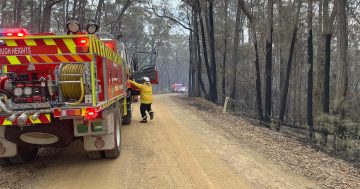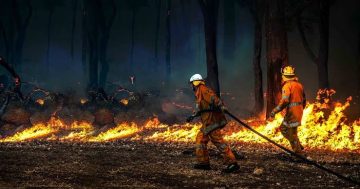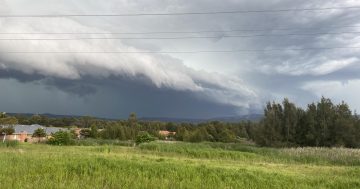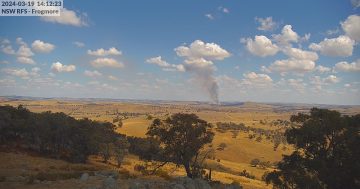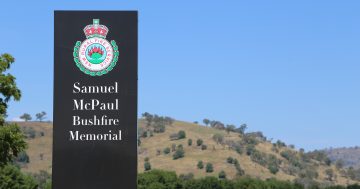
Grass fires are still a risk for the ACT and southeast NSW, especially if things dry out too much during summer. Photo: File.
Summer’s expected to bring a below normal fire potential for the ACT and south-east NSW, but we’ve been warned “destructive and deadly” fires could still occur.
The Australasian Fire and Emergency Service Authorities Council (AFAC) released its summer bushfire outlook, stating the increased fuel moisture, continued expectations of a wetter season and “reduced fuel loads” following the Black Summer bushfires led to this classification for the region.
However, the risk of grass fires is still very real.
“Over the course of the summer, vegetation will naturally dry out with the normal seasonal cycle, and fire potential may rise quickly with any extended period of hot, dry and windy weather,” the report stated.
“This means that it is possible for regions of below normal potential at the start of summer to reach normal or above normal bushfire potential later in the season.
“Destructive and deadly fires can still occur during normal bushfire seasons across Australia.”
The Bureau of Meteorology’s long-range forecast has predicted above average rainfall for large parts of eastern NSW, along with cooler weather.
But all this rain, and now the warming weather, has led to an explosion of grass growth, which could pose a threat.
“Very high grass loads could result in larger, more intense fires in NSW despite the onset of cooler weather,” the AFAC report stated.

A below average fire season is predicted for the ACT and south-east NSW. Photo: AFAC.
Looking at the ACT in particular, the Territory’s above average spring rainfall has left soils saturated which means “extensive” grass growth is expected.
ACT Rural Fire Service chief officer Rohan Scott said while everything was quite green at the moment, this could change come January and February.
“Some grass has already gone to seed, and it will start to dry off … [how much] will depend on the rain over the coming month or two,” he said.
“When grass has that green tinge, there’s still moisture in it, and that means its flammability is reduced considerably, its chances of igniting and carrying fire is reduced.”
Canberra’s grasslands are mainly located to the north and west, along with nature parks scattered in the city.
Mr Scott urged the community to be vigilant in such spaces.
“Fire needs a point of ignition … so don’t take unnecessary risks, don’t have fires out in the open and the like, early reporting of unattended fires is also important,” he said.
He pointed to a recent incident at Canberra’s Spilt Milk festival as an example of how quickly things could change.
“There was a car fire there which ignited the grass around it very quickly,” Mr Scott said.
Meanwhile below average fire potential is expected for the region’s forested areas.
As for NSW, there has been “prolific” grass growth but early summer fire activity is expected to remain below normal in flood-affected areas.
But the AFAC report warned this classification had the potential to change with an expected return of more typical rainfall conditions over summer.
“These grass fuels are likely to cure [dry off] and become more susceptible to fire,” it stated.
“This will result in an above average fire potential later in summer, with the chance of exceeding average fire danger in grassland areas increasing towards the end of the quarter.
“[In addition] while the recent rain has assisted in the recovery of areas burnt during the 2019-20 season, these areas are likely to experience a below average fire potential due to lower fuel loads and wet conditions.”
Mr Scott urged everyone to become familiar with the updated fire danger ratings now consistent across the ACT and NSW, and “prepare for anything”.
“While a grass fire’s height is usually lower [than a bushfire] it can still reach quite a height, and can develop embers ahead of the fire front,” he said.
“Keep your grass mown and short, rake up anything which could be fuel such as leaves and debris, prune brushes, clean out your gutters.
“Also make sure firefighters can have access to the back of your properties if trucks need to get through, and prepare your emergency plan and kit.”
He reminded the community firefighters had been training hard throughout spring and were ready to help if needed.
“If it wasn’t for our volunteers, the community wouldn’t be as well protected as it is,” Mr Scott said.
“I also want to thank their families who support them to train, I think sometimes they can be overlooked but they’re just as important.”







